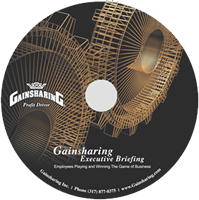Are you going to miss the opportunities the recovery will bring?
Now that things are turning around economically, if we don’t get organized, we’ll miss the opportunities that come our way.
There are some “classic”, predictable problems you’re likely to have. Let’s go through some of these “pot holes” you want to avoid:
1. Don’t Know What the Challenge is
What Do You Want?
 Specifically.
Specifically.
Could you write it down for me?
If we had terrific performance as the work demands increase, what would that look like? Could you describe it in detail for me?
Would your employees have the same answer as you?
Paul Meyer, founder of the Success Motivation Institute, once stated that,
“If you are not achieving what you think you should in life,
it’s because your goals are not well defined enough.”
Do we want to:
– Shorten our cycle time?
– Improve quality levels?
– Improve labor productivity?
– All of these?
– Something different?
What is the most important focus as the “pace” increases?
You can’t hit a target you can’t see.
2. Going in Different Directions
Your employees lost their overtime pay when business slowed down, didn’t they?
 Do you think they’re expecting overtime pay to return now as things get busier?
Do you think they’re expecting overtime pay to return now as things get busier?
When they think about the good things that will come with the recovery, do you think they are thinking, “Bring back the OT pay”?
Are your employees hoping to get their overtime back, while you’re hoping that we can pick up the pace and get the extra work done during the 40 hour work week?
You’re planning to pull the rope one way. They’re planning to pull it the other way.
How are we going to get everyone pulling in the same direction? (I have an answer for that.)
3. Do We Measure What’s Important?
It’s the centerpiece of analysis, communication, feedback. Without measurement, how would we know if we’re getting off track?
If I held in my hand, an envelope with an in-depth rating of your job performance, would you want to see it? Of course you would!
People are inherently curious. They want to know how they’re doing. This is a powerful, critical force to manage and lead.
When you put measures in their workspace, you get these dynamics working for you.
They’ll also go to extremes to protect their self-esteem.
So if you’re measuring their performance, they want to know what you’re finding. Is this info a threat to them? Does it make them look bad? Will others know how the measurements turned out?
Even if we know what we want (what success looks like), if we don’t measure, things fall apart.
4. Don’t’ Know Customer’s Priorities
If you have new business opportunities (even new customers) now, are the customers’ priorities clearly communicated throughout your company?
The customers clearly know what’s important to them and they’re probably “trying you out” to see if you can deliver what they need.
Your employees will probably find it interesting to hear about details about the customer, what they are looking for, why this order is so important to them. Laying out this “story” is critical to getting the emotional involvement you want from you employees.
 Similarly, I heard an English military man talking about the differences between English and American soldiers. He said
Similarly, I heard an English military man talking about the differences between English and American soldiers. He said
“When you tell a European soldier what do to, he does it. An American soldier needs a reason, because this fight is his fight.”
Immersing your employees in your customers’ priorities and how you are part of their “success plans,” makes this their “fight”. Your employees crave and need this involvement in the “big picture”.
You want to get this dynamic going for you.
5. Don’t Get Anything Out of It
Once the performance begins to improve, it’s unavoidable that people will ask “So what do I get out of this”?
Your employees see the company benefiting financially (or they think that it is), so this becomes a fairness issue.
If they are consistently giving that “extra performance,” it seems fair that the company should provide “something extra” for them.
Of course, you want to have rewards tied to hitting the company goals. But how do you do this correctly? What do you include, leave out, and how should you structure the whole thing?
It’s important that bonuses track with the bottom-line. When this is put together correctly, it’s really comes a powerful feedback tool to focus performance throughout the company.
Your Gainsharing System provides a consistent method to provide, focus, information, measurement, analysis and feedback.
The discipline Gainsharing is very powerful. As Tim Gase, President of Peerless Saw in Groveport, Ohio once told me,
“Gainsharing requires that his managers get together once a week and review, what was suppose to happen and what actually happened, whether they feel like it, or have time for it or not.”
Through your Gainsharing System, you’ll be communicating the:
– Current Challenges,
– Who is going to do what by when to achieve the Goals,
– How we are doing on our Measures,
– Performance on our Customers’ Priorities, and
– What we need to do to drive our Gainsharing Bonuses.



